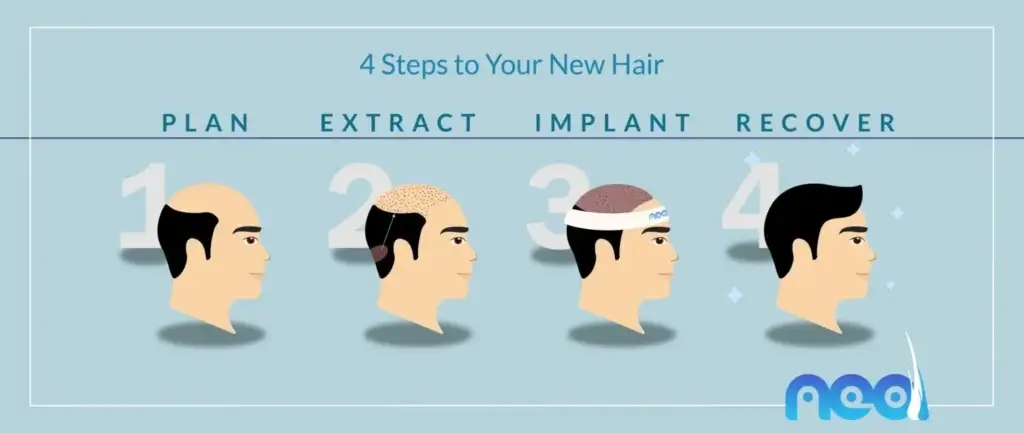Under the direction of a qualified and experienced doctor, the FUE hair transplant Turkey operation is considered as a low-risk, safe surgery. Like any medical operation, even if they are usually little and temporary, there are certain possible hazards and side effects to be aware of.
A FUE hair transplant usually causes extreme redness, swelling, and scabbing at both the donor and recipient sites. Usually responding to the transplant, the scalp changes throughout the healing period. Usually lasting several days to a week, these symptoms and signs vanish with proper treatment based on advised aftercare protocols.
Summary of Risks
| Risk | Description | Prevention/Resolution |
|---|---|---|
| Minimal Scarring | Tiny puncture marks that fade over time | Medical consultations to assess scarring risk |
| Infection | Minor risk if post-operative care is not followed | Maintain scalp hygiene, avoid touching treated areas, report infections |
| Folliculitis | Mild inflammation causing red pimples or pustules | Proper scalp care and topical treatments |
| Temporary Loss of Sensation | Temporary numbness or increased sensitivity in donor or recipient areas | Nerve regeneration over a few weeks |
| Shock Loss | Shedding of transplanted hair before new growth begins | Natural regrowth within a few months |
FUE has a least intrusive quality that typically results in minimal scarring. The tiny puncture marks created by FUE typically fade and practically disappear, invisible as the scalp heals. Rarely, though, those who have a tendency for keloid or hypertrophic scarring may have more striking marks. Medical consultations ahead can help determine whether a patient is likely to get this form of scarring.
Infection As with every surgical surgery, there is a minor risk of infection should the post-operative care recommendations be disregarded strictly. Maintaining cleanliness of the scalp and avoiding touching or scratching the treated areas are crucial steps in preventing infections. Typically providing comprehensive aftercare guidelines to lower this risk, Turkish clinics should be notified immediately should any sign of an infection—such as redness, discomfort, or discharge observed.
Folliculitis: inflammation of hair follicles
Some people develop folliculitis, a mild inflammation of the hair follicles that could cause a few red pimples or pustules on the scalp. Usually temporary, this issue can be resolved with the right scalp care or advised topical treatments. Usually, folliculitis passes on its own as the scalp heals.
Following a FUE operation, a donor or recipient area may have a temporary loss of sensation or increased sensitivity. This results from little nerve disturbances generated during implantation and follicle removal. Usually within a few weeks, when the nerves renew, sensation returns to normal; occasionally, it may take more time.
Patients may develop a phenomena called “shock loss,” in which some of the transplanted hair loses prior to regrowth starting following a FUE transplant. This is expected of the process as, upon transplantation, the follicles undergo a new phase of growth. For some individuals, this can be alarming, but the hair often grows back in a few months, which causes slow thickness and coverage improvement.
Although FUE hair transplant Turkey carry certain possible hazards, overall they are quite low and controllable when carried out by a qualified practitioner and when well monitored post-operative care is followed. Most patients discover that the natural, long-lasting effects of FUE exceed the low risk and transient negative effects.


